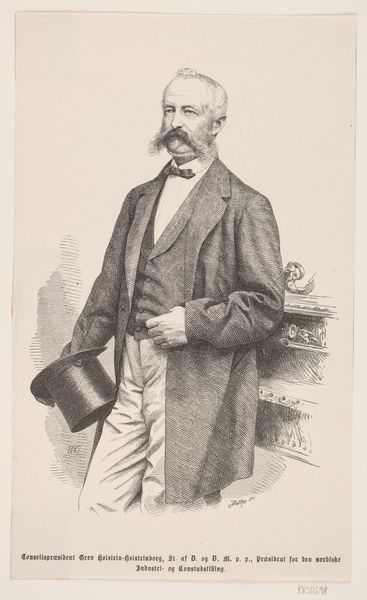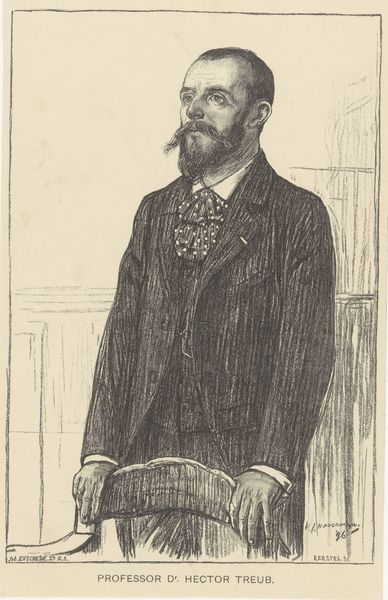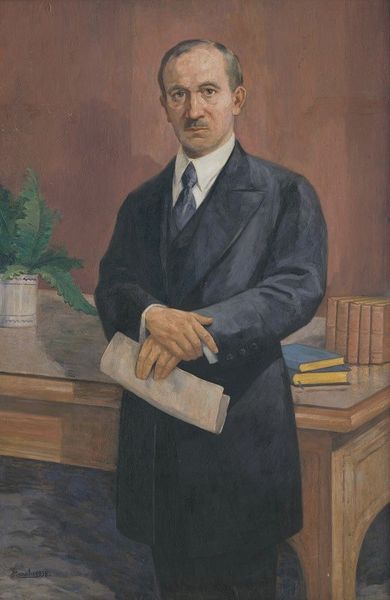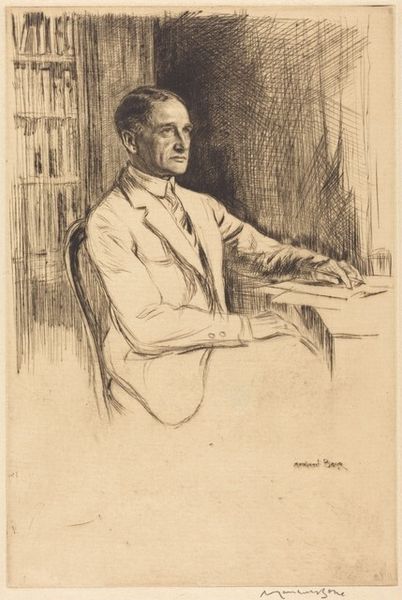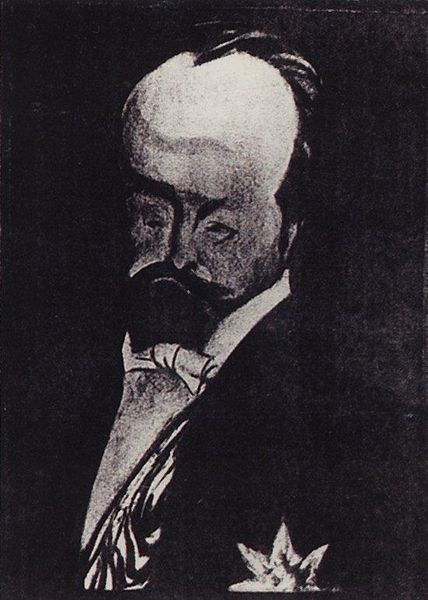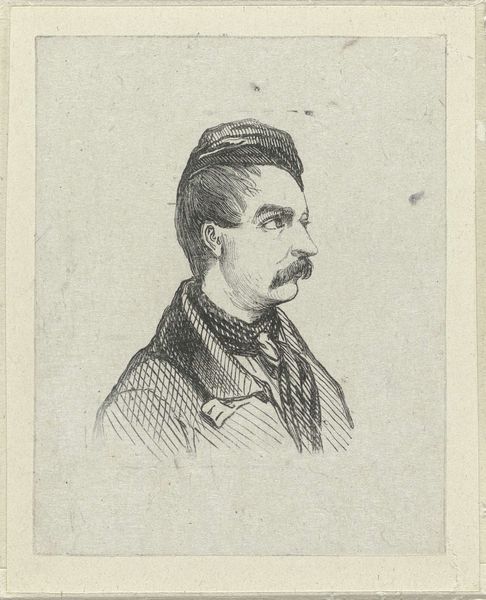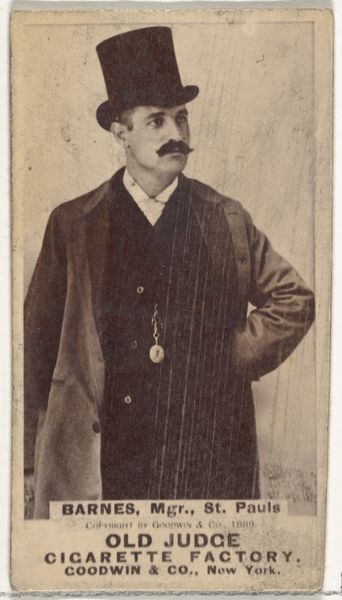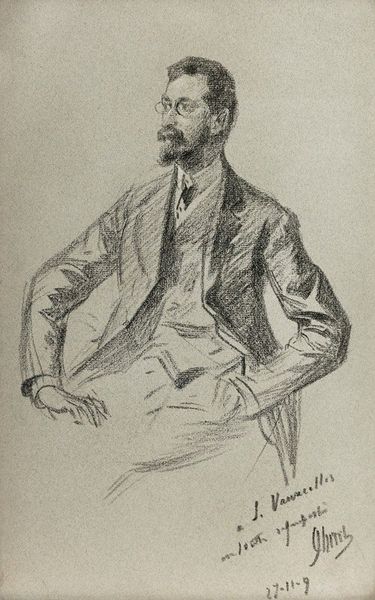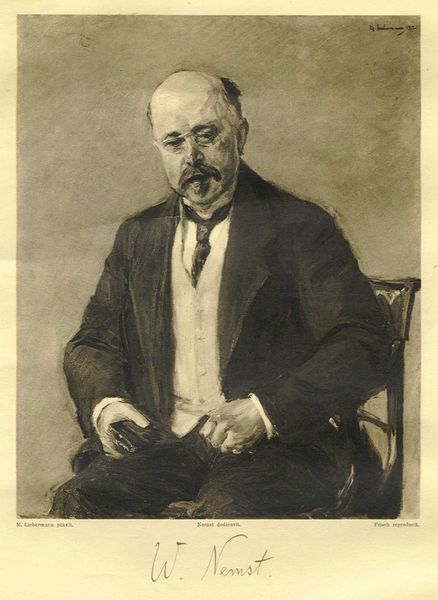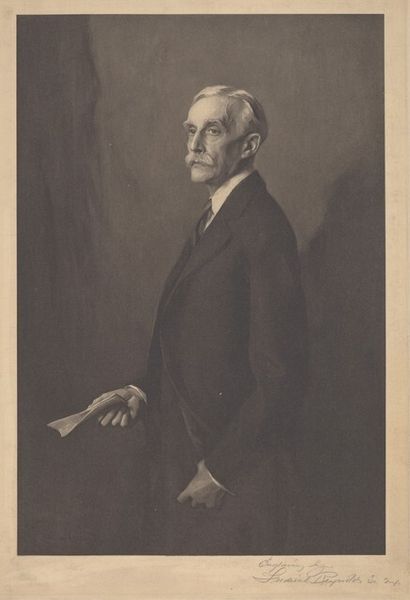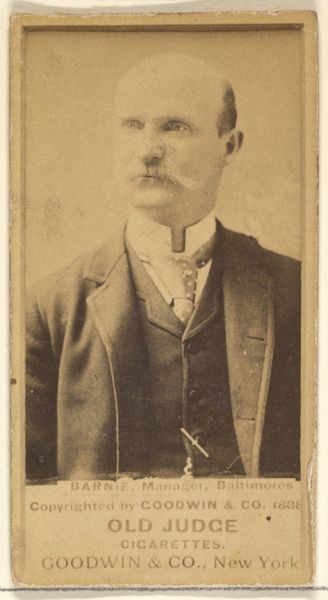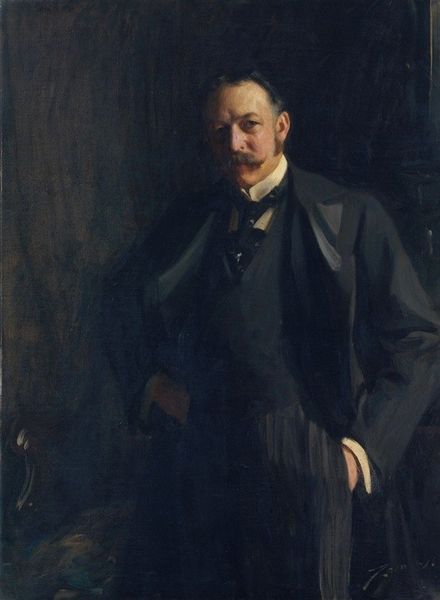
print, etching
#
portrait
# print
#
etching
#
caricature
#
realism
Copyright: National Gallery of Art: CC0 1.0
Curator: At first glance, there's something immediately striking about this piece, almost a solemn quality, wouldn’t you say? The grey tones really create a serious atmosphere. Editor: Indeed. We’re looking at an etching from 1928 titled "Theodore Roosevelt," crafted by Timothy Cole. It’s a print, rendering the former president in a straightforward, realist style. Cole was well known for his engraving, and particularly his reproductive prints. Curator: An etching, that explains the almost tangible texture, doesn't it? You can practically see the marks left by the etching needle. The starkness and fine lines highlight Roosevelt's prominent features, giving the image real gravitas, while softening his appearance slightly from most images of the man. What kind of audience did these kinds of prints speak to at the time? Editor: Given the era and Cole's established reputation in publications such as *Harper's*, this work likely targeted an educated middle-class audience interested in political figures. It was made almost a decade after Roosevelt's death in 1919. There was a resurgence in his popularity due to the great depression, when some political circles began seeing him as a role model to get the US through a terrible economy. The original painting Roosevelt sat for has also since been lost, with the prints being only evidence of what it once looked like. Curator: So, beyond being a portrait, it acts as a record and artifact. Thinking about that audience too, there's an interesting commentary here on labor. Consider the labor invested to create this image, translating and etching, a kind of craft skill—and what kind of appreciation the educated would have had for the artform itself at this time. Editor: Absolutely. The reproductive labor involved also allowed mass production in a time of need and social upheaval; It speaks volumes about the role of imagery in shaping political memory, which is powerful, especially for the masses at the time. How else would the population access the imagery of important political figures? Curator: A point well made. Reflecting on Cole's portrait, one gets the sense of capturing Roosevelt not merely as a face, but immortalizing the *idea* of him. Editor: I agree. It reminds us how crucial printed images were in constructing public memory of leaders and shaping socio-political opinion back then.
Comments
No comments
Be the first to comment and join the conversation on the ultimate creative platform.

